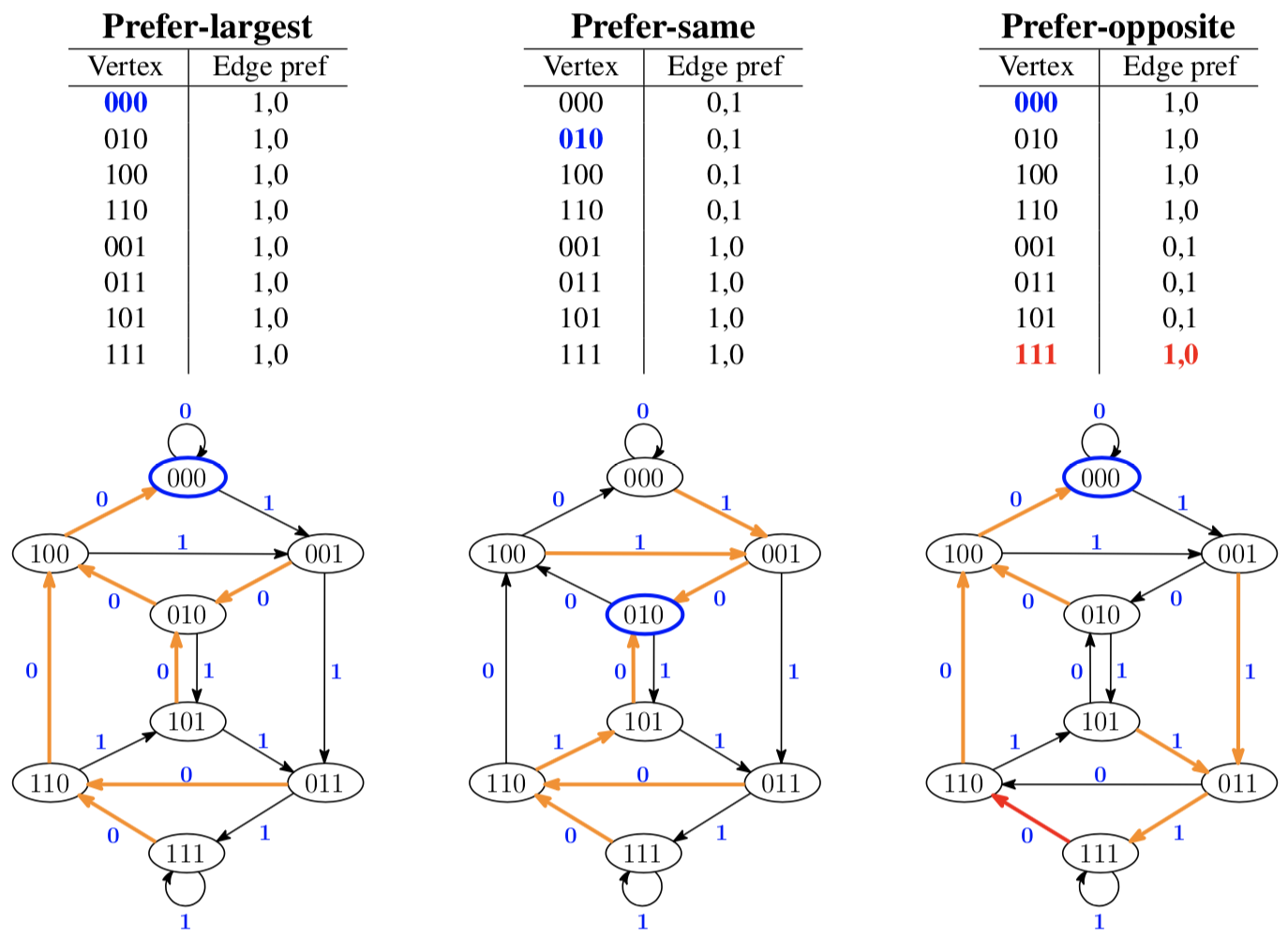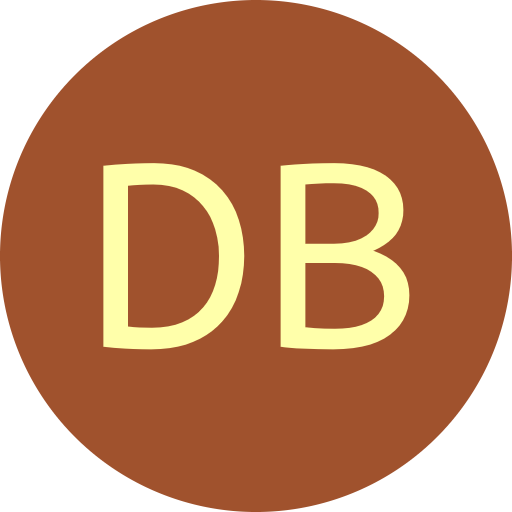| Euler Cycle | Output | ||||||
|
Given an alphabet of size $k$, the de Bruijn graph of order $n$ is the directed graph $G(n,k) = (V,E)$ where $V$ is the set of all $k$-ary strings of length $n$ and there is a directed edge $e=(u,v)$ from $u = u_1u_2\cdots u_n$ to $v=v_1v_2\cdots v_n$ if $u_2\cdots u_n = v_1\cdots v_{n-1}$. Each edge $e$ is labeled by $v_n$. Outputting the edge labels in a Hamilton cycle of $G(n,k)$ produces a DB sequence. Below (left) is a Hamilton cycle in the de Bruijn graph $G(3,2)$. Starting from 000, its corresponding DB sequence is 10111000.
Each de Bruijn graph is connected and the in-degree and the out-degree of each vertex is $k$; the graph $G(n,k)$ is Eulerian. $G(n,k)$ is the line graph of $G(n{-}1,k)$ which means an Euler cycle in $G(n{-}1,k)$ corresponds to a Hamilton cycle in $G(n,k)$. Thus, the sequence of edge labels visited in an Euler cycle is a DB sequence. Illustrated above (right) is an Euler cycle in $G(3,2)$. The corresponding DB sequence is 0111101011001000.
Finding an Euler cycle in an Eulerian graph is linear-time solvable with respect to the size of the graph. However, since the graph must be stored, applying such an algorithm to find a DB sequence requires exponential $O(k^n)$ space and there is an exponential time delay before the sequence can be output.
Finding an Euler cycle
The following algorithm for finding an Euler cycle is based on Fleury [Fle83] with details taken from [Rus03]. The basic idea is do not burn bridges. In other words, do not visit (and use up) an edge if it leaves the remaining graph disconnected.
- Pick a root vertex and compute a spanning in-tree (arborescence) $T$
- Make each edge of $T$ (the bridges) the last edge on the adjacency list of the corresponding vertex
- Starting from the root, traverse edges in a DFS manner by visiting the first unused edge in the current vertex's adjacency list
A second well-known Euler cycle algorithm is from Hierholzer [Hie73]:
- Start at an arbitrary vertex $v$ visiting edges in a depth-first manner until returning to $v$.
- Repeat until all edges are visited: Start from any vertex $u$ on the current cycle and visit the remaining edges in a DFS manner until returning to $u$. Join the two cycles together.
This cycle-joining approach is the basis for all the successor rule constructions.
The lexicographically smallest Euler cycle can be generated by applying the ideas of cycle joining [MM09].
Greedy algorithms, preference tables, and Euler cycles
Preference tables [Alh12] (also called look-up tables [Xie87]) generalize the notion of the greedy constructions. In particular, a preference table specifies the precise order in which edges are visited for each vertex when performing Step 3 in Fleury's Euler cycle algorithm. Thus given a preference table and a root vertex, Step 3 in the algorithm can be applied to construct a DB sequence if combining the last edge from each non-root vertex forms a spanning in-tree to the root. For example, the preference tables and corresponding spanning in-trees for the Prefer-largest, Prefer-same, and Prefer-opposite constructions are given below for $G(3,2)$. For the Prefer-largest, the only valid root is 000. For the Prefer-same, either 010 or 101 could be chosen as root. The Prefer-opposite has a small nuance. By its strict definition, the edges will not create a spanning in-tree for any root. But by changing the preference for the single string 111, a spanning in-tree is created when rooted at 000.

- [Alh12] A. Alhakim. Spans of preference functions for de Bruijn sequences. Discrete Appl. Math., 160(7-8):992–998, 2012.
- [Fle83] Fleury. Deux problemes de geometrie de situation. Journal de mathematiques elementaires, 42:257–261, 1883.
- [Fre82] H. Fredricksen. A survey of full length nonlinear shift register cycle algorithms. Siam Review, 24(2):195–221, 1982.
- [Hie73] C. Hierholzer. Ueber die Möglichkeit, einen Linienzug ohne Wiederholung und ohne Unterbrechung zu umfahren. Mathematische Annalen, 6:30–32, 1873.
- [MM09] M. Matamala and E. Moreno. Minimum Eulerian circuits and minimum de Bruijn sequences. Discrete Math., 309(17):5298–5304, 2009.
- [Rus03] F. Ruskey. Combinatorial generation. Working Version (1j-CSC 425/520), 2003.
- [Xie87] S. Xie. Notes on de Bruijn sequences. Discrete Appl. Math., 16(2):157-177, 1987.
 De Bruijn Sequence and Universal Cycle Constructions
De Bruijn Sequence and Universal Cycle Constructions